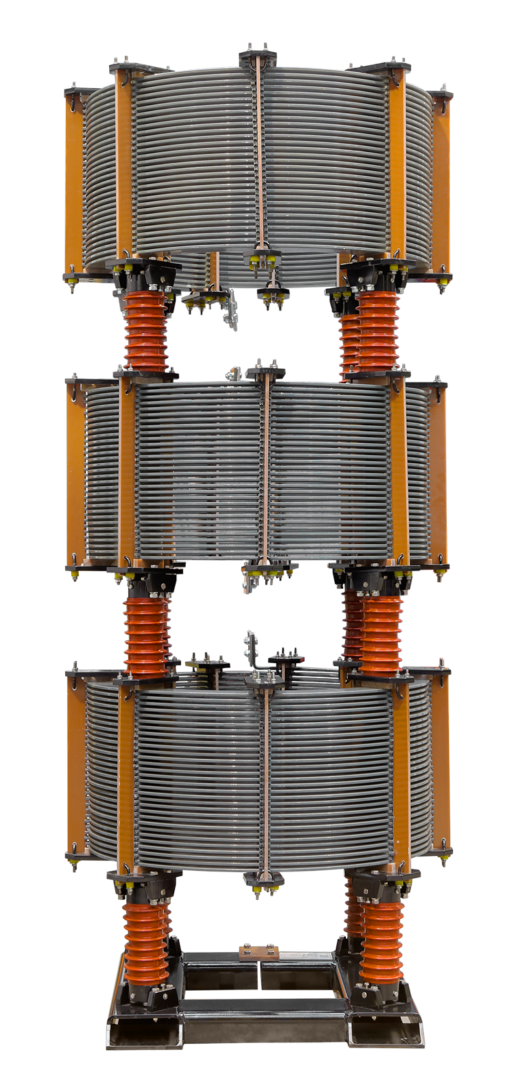CURRENT-LIMITING REACTORS
APPLICATION:
The current-limiting reactor is an electrical device which is fitted in series to the current path in order to limit the short-circuit current.
The result of the presence of a reactor in a circuit is an increase of the resultant impedance of the current path, and consequently there is a reduction in the initial short circuit current. The required and expected activity is present only during short-circuiting. During a normal reactor operation, the current-limiting reactor allows the conductive line to work continuously, therefore power losses occur and voltage drops. The short-circuit current limiting action is the effect of a reactor’s operation. During the flow of the short-circuit current a large inductive voltage drop is created on it, and in effect the voltage applied to the circuit fault is significantly reduced. Thus, the short-circuit current in the circuit becomes smaller.
Manufacturing range:
Current range: from 400 A up to 5000 A
Voltage range: up to 36 kV
Type of cooling: AN
Isulation class: H
Standard operating conditions:
Max. operating altitude – 1000 m above sea level
Operating temperature range – 25 to + 40 °C or other on request
Rated frequency 50 or 60 Hz
Design characteristic:
Core – Current-limiting reactors are air-cooled reactors without a core, with H class temperature insulation. The reactor’s winding made with a rectangular cross shape profile. A major axis of coil is oriented at right angles to the long side of the conductor. Coils of wire composed of two or more flat cables (trunking) arranged in stacked position on the ” flat “. This embodiment causes that they constitute one electric wire, which are executed solenoid coil with a cross section which forms the sum of their cross sections.
Winding– A major axis of coil is oriented at right angles to the long side of the conductor. Coils of wire composed of two or more flat cables (trunking) arranged in stacked position on the ” flat “. This embodiment causes that they constitute one electric wire, which are executed solenoid coil with a cross section which forms the sum of their cross sections.
Standard equipment:
Under-base
The terminals LV – busbar leadouts
Rating plate
Earting terminals

